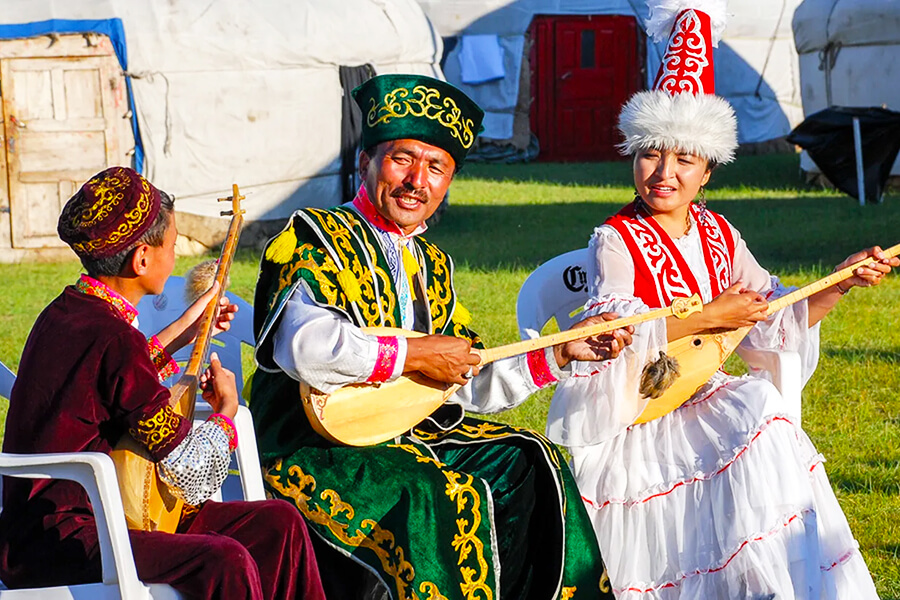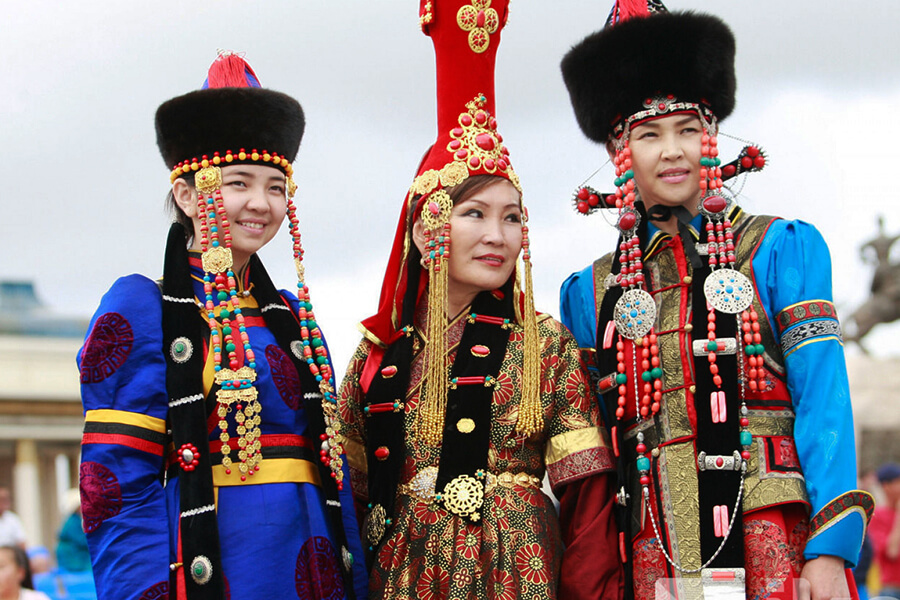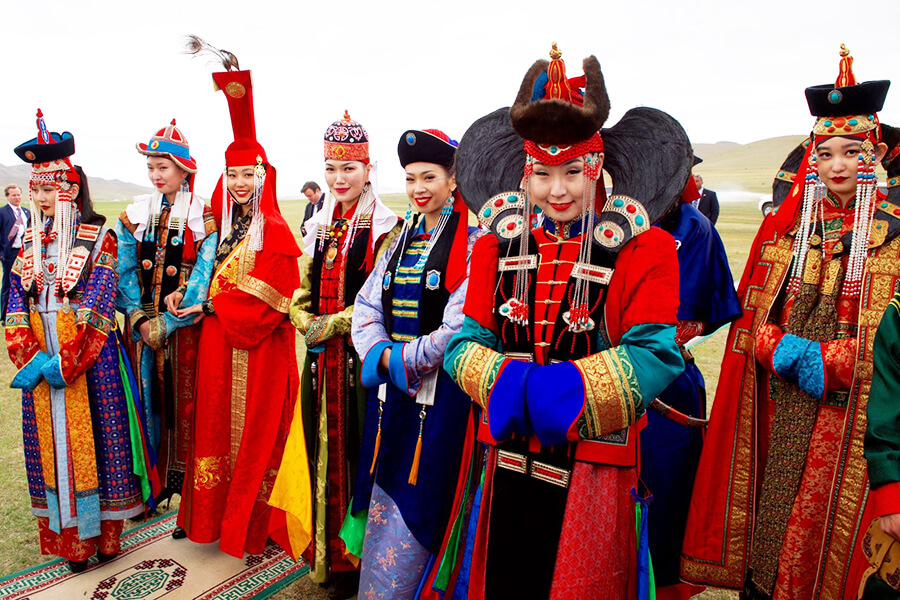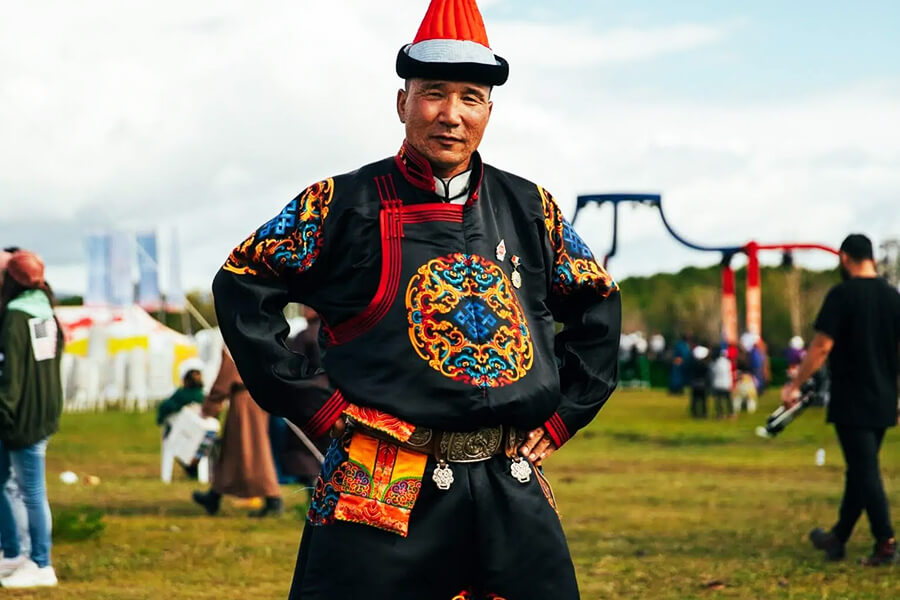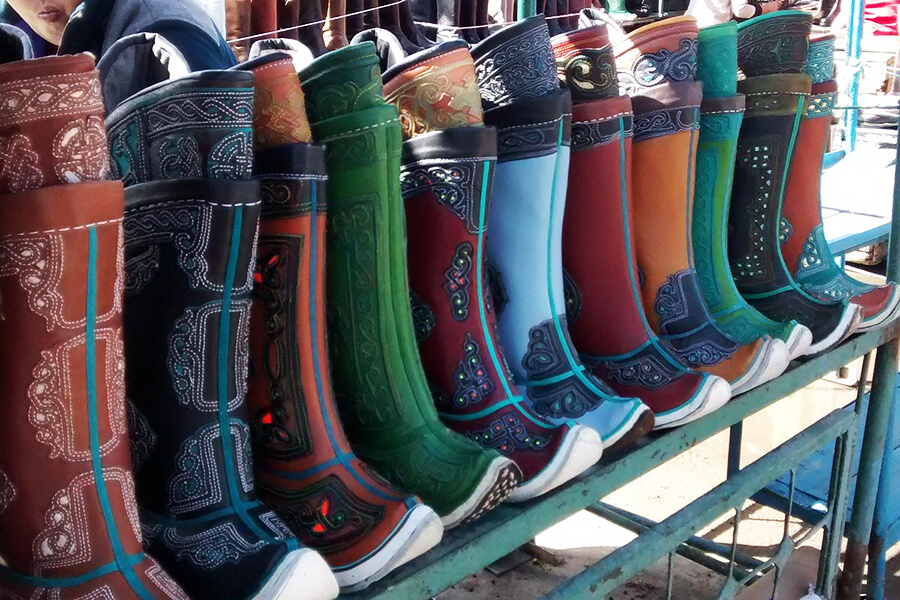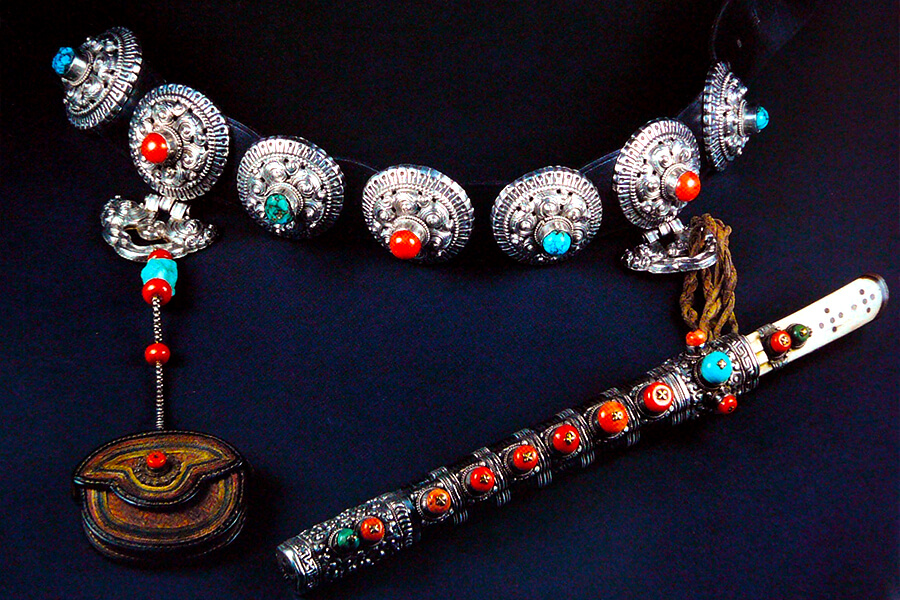Mongolia traditional costumes are distinctive as considered one of the greatest Empires in the world, Mongolia is known for its glorious history and rich culture. And one of the outstanding features that make this used-to-be-the-greatest country stand out is its traditional clothing. It has various types of costumes depending on their ages, gender, and marital status, and reflects the nomadic style of people living there.
“It is amazing how this nation invented clothes that can fit all seasons and needs, well thought off and used in many different ways”, said Medieval tourists from Europe.
Mongolian Hat
In Mongolia, the hat is considered the most important part of clothing as it represents the wearer's social status. The traditional headwears varied in shape, material, and purpose, and there are merely 400 different styles of hats in Mongolia.
For example, the young would wear more colorful and fashionable headdresses than the middle-aged, while they differed in the gender of the person and which tribes they belong to. Besides, the maturity and marriage status of a person would also affect what types of hats they could wear like women and men wore summer hats made of plush wet velvet upturned brim & brocaded pointed tops, or a married woman would not be allowed to wear “Toortsog” hat, which is composed of six gores that are only available for girls & men. In ancient times, the fanciful knot on top of the hat represented the capable power of the enemies.
Mongolian have a strong belief that the spirit of a person is in their hat and belt so they never put their hat on the ground or pass it to other people. When hanging, they put the hat above other clothes to make sure that it gets the highest position. Mongolian think one should wear hats to noble ceremonies and festivities.
Women's headwear was known for its richness of decoration, and it was more fashionable than men’s and a ribbon was often added on it with turquoise.
Mongolian Deel
A long time ago, the Mongolian ancestors invented that kind of clothing to protect humans from harsh weather conditions, which was suitable for the daily activities of the nomadic living of people there. And each tribe or ethnic group has its own Deel, which is differentiated by its color, cut, and trim. The distinctiveness may be hard to realize for foreigners but obvious for the Mongolians. The Deel is a loose calf-length tunic made of one piece of material. Its long sleeves are tailored long to be used as gloves in the cold weather and as padding when they want to carry something. On the other hand, it could also be turned into a blanket during a long journey.
There are three types of deel and each of them is worn in a particular season. The first one is called “Dan Deel”, which is made of light, thick bright materials, and is worn by women during the late spring and summer. The other one is “terleg” which is a slightly more padded version and worn by both men and women while the wide, cup-shaped sleeves nicknamed ”hooves” is a useful feature that helps prevent the nomad hands from the cold and injuries while doing hard work.
Deel has the same form for both men and women, while made deels are quite larger and in more somber colors. Daily deel is often gray, brown, or some other dark color, while in the holidays, the colors would be brighter such as blue, green, or claret silk with a silk sash several meters long.
Mongolian Belts
As important as the hat, the belt is a special piece of national clothing since it is also believed that it is the place where the spirit of a person resides. It can be made from numerous materials such as leather, cloth, and metal A belt can represent the wealth and status of a person depending on the materials like gold, silver, or silk. Because of its value, the old belt is not discarded but burnt and purified with fire. Moreover, there are beliefs that men should not wear women’s belts while one is told not to walk over or step on others’ belts.
In the old time, Mongolians exchanged their belts with each other to show their brotherhood. It is also used in special events and rituals. For instance, a Mongolian bride often wears a belt with special meaning during her wedding ceremony.
Mongolian Boots
Mongolians traditionally wore long leather boots with upturned toes and they were colorfully adorned. There was explanation for this uncommon style, one of them is that an upturned tip prevents a rider’s feet from slipping out of the stirrups. Nevertheless, traditional boots are quite thick and rigid so they are mostly incapable of walking. Despite their uncomfortable material, they can be worn all season with a thick sock added in the winter and removed in summer. In a way, they are the most eco-friendly boot in the world.
There are over 20 ethnic groups in Mongolia, and each one has its own culture and customs. Therefore, they would have their distinctive style of clothing, and boots are no exception. They could be differed in the number of decorative items on the boots starting from 8 to 32.
Mongolian Accessories
Traditional accessories are made of precious metals such as silver, copper, and gold for decoration while silver and copper are thought to be beneficial for health. Mongolian traditional women wear pearl hats and silver earrings with pearl decorations. In contrast, accessories for men are knife, tinder-flint, and steel, which are mainly decorated with silver. Silver is considered the most awarded possession a person would have. These accessories are not only symbols of Mongolian culture, but the masterpieces of jewelry and goldsmiths of Mongolia.
One of the best ways to see Mongolians wearing their traditional clothing is to travel during their national festivities such as Tsagaan Sar and the Naadam festival. The elder would indeed love to dress up more than the younger as they prefer to wear casual clothes.
Mongolia vacation may include a traditional costume trial during the trip which is the wonderful experience to have a deep look insight the grassland country.

